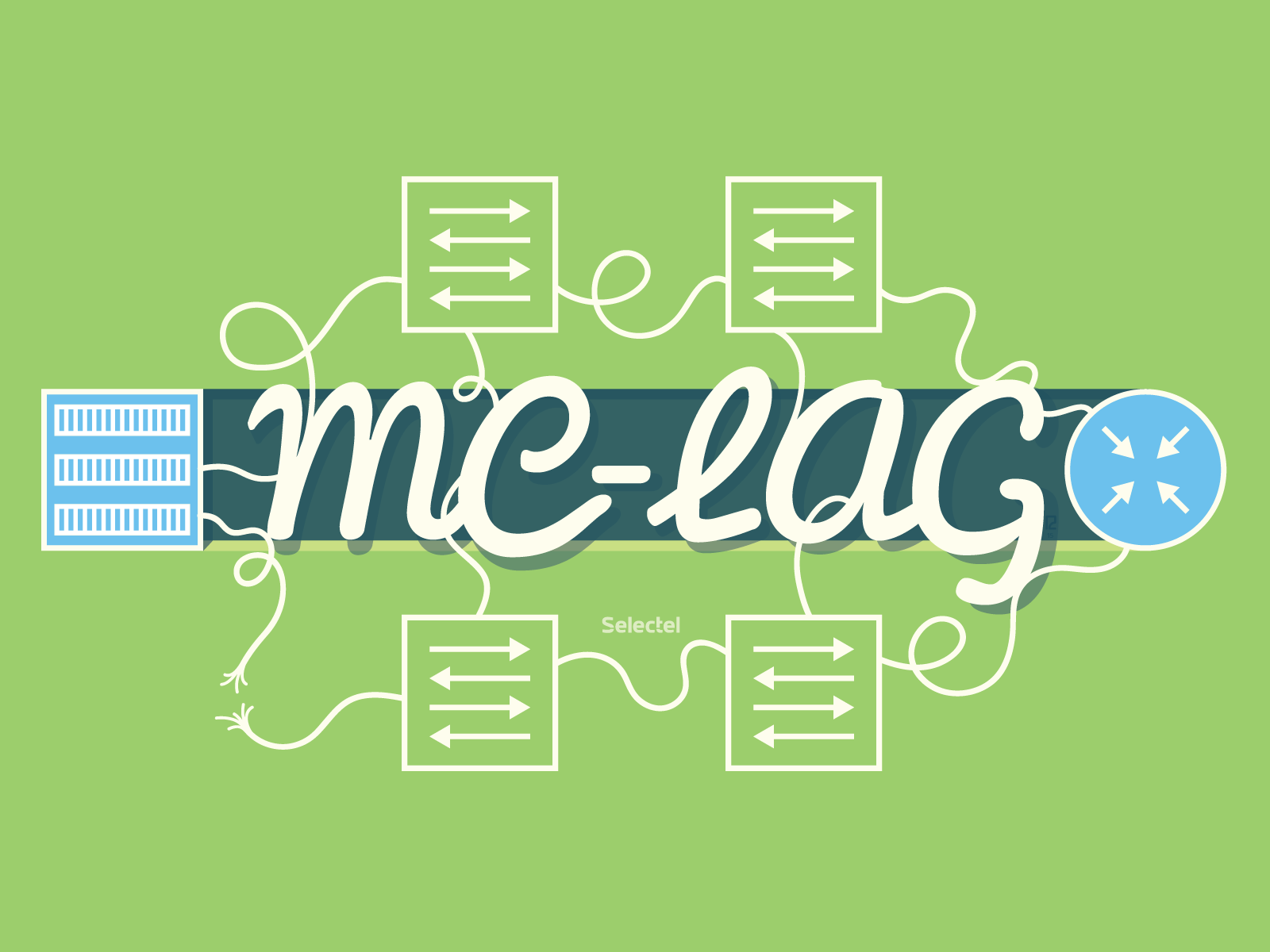Added Redundancy with MC-LAG

Nobody likes it when their servers go offline, even if it’s just for a moment. Unavailability, which is often caused by a single malfunction, could result in serious financial losses. To bring everything back to working order, the cause first has to be identified, and then the necessary repairs have to be made.
One should be able to predict downtime and reduce it to a minimum. This is done by implementing redundancies. Here, secondary components are kept active and can take over for a primary device if it breaks down. We can see this in servers, which are often equipped with two power supplies, several network interfaces, etc. Redundancy can also be implemented for network connections.
Connection reliability is incredibly relevant for us today. The number of clients with complex and unique projects is growing, and for them, uninterrupted server availability is of vital importance. For example, network failure in enterprise systems can cause a large number of problems, both technical and financial.
It was with these clients in mind that we launched our MC-LAG Backup Connection service. MC-LAG stands for Multi-Chassis Link Aggregation Group. Using link aggregation and multiple switches, this technology raises network connection reliability. Let’s take a look at how it works.
How It Works
Look at the following diagram:

Here we see a network connection without any redundancies. The end host is connected to a single access switch with one interface and one link. Any incident (such as a broken link or switch) will cause the end host to go offline, and the service may be unavailable for quite a while.
A redundant connection helps avoid this:

As you can see from the diagram above, not one, but two independent access and aggregation switches are used.
The end host (which can be a server, router, switch, etc.) is connected by an aggregated Ethernet link (LAG, Etherchannel) using LACP and requires two identical network interfaces.
This is enough to back up both Internet and LAN connections.
Let’s take a look at two practical examples.
Example 1. A private cloud is physically hosted in a rented server rack. It is very important that the cloud be accessible from the Internet:

Example 2. A backup Internet and LAN connection for a high-load, front-end web server.

Service Terms
MC-LAG should be of particular interest to clients renting custom servers. These servers are often used for very specific tasks and require higher levels of availability.
The service is also available for colocation and server rack customers.
If you already rent a server from us and would like to set up a redundant connection, you will have to cancel your existing server and order a new one with the same configuration. When you cancel a backup connection, you will also lose the corresponding server.
Redundant connections can be provided with two different interfaces: 1000Base-T and 10GBASE-LX. EtherChannel connections are provided using LACP and 802.1ad. The two switch links to the end host are simultaneously active.
The new service can be ordered from our control panel (under Network Services). After you place your order, tech support will contact you to work out the details of your configuration.